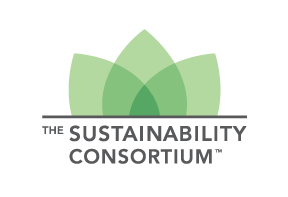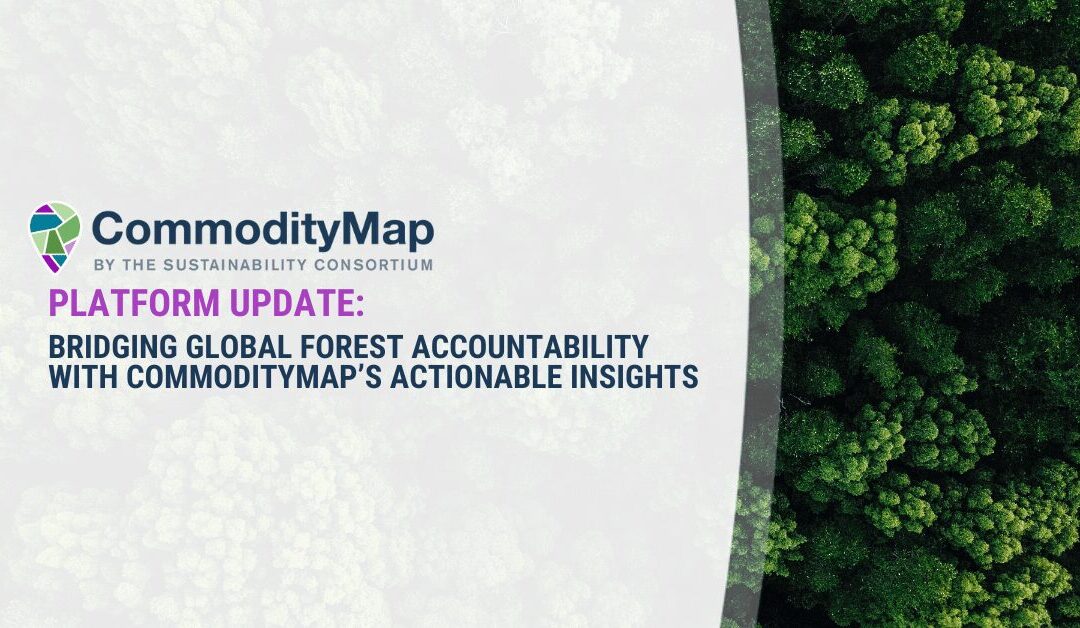Halfway to 2030, the world remains far off track to halt deforestation.
The newly released 2025 Forest Declaration Assessment offers the clearest picture yet of global progress toward ending forest loss and restoring the world’s forests.
The findings are striking nearly 9 out of 10 hectares of deforestation over the past decade were driven by permanent agriculture, much of it linked to globally traded commodities. But the report also underscores a vital truth: we know what works. The challenge now is delivery: connecting credible science with the systems and decisions that can stop forest loss in practice.
Turning Global Insights into Action
At The Sustainability Consortium (TSC), we see this as both a warning and an opportunity. Through CommodityMap, we transform the kind of global insights featured in the Forest Declaration Assessment into practical tools that help companies and stakeholders take action, even those without deep data or analytics capacity.
Defining How the World Measures Deforestation
For several years, the Forest Declaration Assessment has relied on a consistent scientific foundation: a spatial model developed by TSC and research partners WRI and University of Maryland.
This year marks an evolution of that legacy. TSC’s CommodityMap team co-authored the new paper that underpins the Assessment’s map-based definition of deforestation. By increasing resolution from 10 km to 1 km, the new model dramatically improves precision, allowing distinct, closely spaced instances of deforestation to be identified rather than aggregated.
We also supported the editorial review of this year’s Forest Declaration Assessment report, ensuring the new data was integrated accurately and effectively.
From Global Accountability to Local Action
Halting deforestation requires more than better data. It requires delivery, governance, transparency, and funding practical pathways that turn information into impact.
The Forest Declaration Assessment reminds us that deforestation is deeply intertwined with global markets. Yet many businesses, especially small or indirect buyers, face opaque supply chains and don’t know where to begin.
That’s why we built CommodityMap: to make the first step clearer.
It brings together global datasets, practical tools, and contextual insights to help companies understand where to begin and how to turn awareness into progress:
- Spot likely issues: Clear signals about which supply lines are most likely to be linked to deforestation and other sustainability issues.
- Go Deeper: Science-based recommendations and educational guidance to help prioritize and act on those issues.
- Advance the Science: a pathway for translating new science, like the model in this year’s publication and Forest Declaration Assessment, into applied tools that support real-world progress.
Today, CommodityMap continues to use the previous deforestation model that informed the Assessment for years. In early 2026, we’ll be updating to the new 1 km model to further align our platform with the latest global science and strengthen its value as a decision-support tool.
By connecting complex global science with accessible, user-centered tools, CommodityMap brings the forest accountability agenda within reach for everyone, from small brands to multinational buyers.
As we look ahead, our mission remains clear: to ensure that science doesn’t stay locked in dashboards or technical papers but flows into the hands of people who can use it to drive transformation. Science alone doesn’t change supply chains; Decisions do. Our goal is to make those decisions easier and clearer, grounded in the best available data. Because stronger data leads to stronger action and every decision informed by credible science brings us one step closer to ending deforestation. Reach out to us if you have questions about how to address deforestation with CommodityMap.
Explore further
Explore the new 1 km drivers of tree cover loss map on Global Forest Watch: http://gfw.global/3WvbPAQ
Read the full 2025 Forest Declaration Assessment report
Try CommodityMap for free!
References
Philip G. Curtis et al., Classifying drivers of global forest loss. Science 361,1108-1111(2018). DOI:10.1126/science.aau3445
Michelle J Sims et al., Global drivers of forest loss at 1 km resolution, 2025 Environ. Res. Lett. 20 074027 DOI: 10.1088/1748-9326/add606

